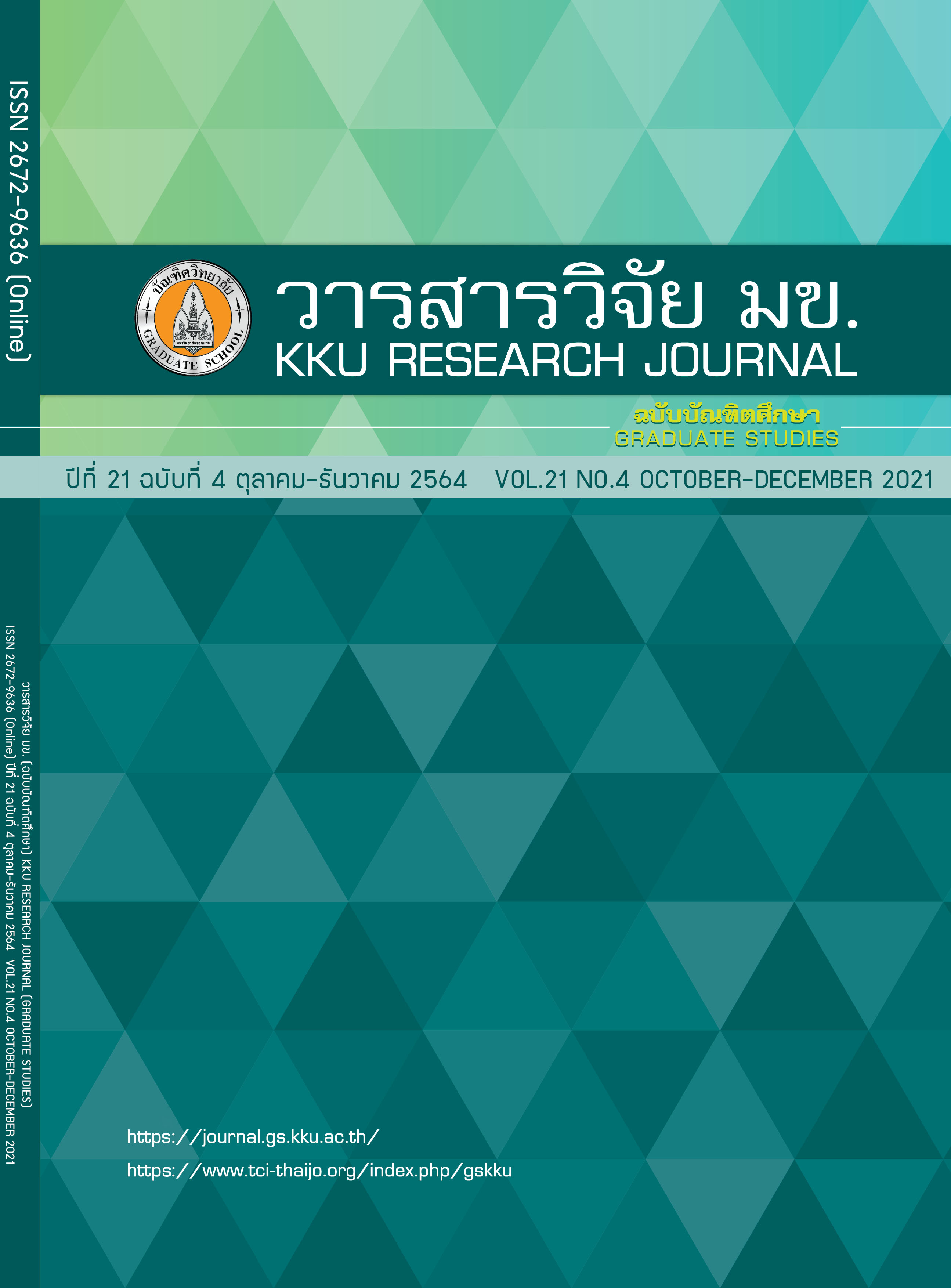Comparison of Carbon Dioxide Emissions (CO2-e) Produced Between Ordinary Concrete Production and Geopolymer Concrete for Environmentally Friendly Construction Industry by Using Life Cycle Assessment Methods
Keywords:
Life Cycle Assessment (LCA), Geopolymer concrete, Ordinary concreteAbstract
The construction industry uses cement as the main raw material of concrete production for building construction. However, cement production process produces Carbon dioxide (CO2) into the environment with higher rate compared to other raw materials. To reduce carbon dioxide emissions from increased cement production, other types of concrete to replace the ordinary concrete such as geopolymer concrete which has fly ash as an ingredient and it is waste from coal-fired power plants was considered. The objective of this study is to compare the amount of carbon dioxide emission equivalent (CO2-e) from the production of 1 cubic meter (m3) of concrete which has the compressive strength of 40 MPa at 28 days in both types using the Life Cycle Assessment (LCA) method. In the analysis of carbon dioxide equivalent (CO2-e), the data from the literature and field data have been used. It is found that the sum of the carbon dioxide equivalent (CO2-e) for both types of concrete production are as follows: Ordinary concrete emits 451.09 kg-CO2-e /m3 and Geopolymer concrete emits 420.49 kg-CO2-e / m3.
References
Huntzinger DN, Eatmon TD. A life-cycle assessment of Portland cement manufacturing: comparing the traditional process with alternative technologies. Journal of Cleaner Production. 2009 May 1;17(7):668-675.
Meyer C. The greening of the concrete industry. Cement and concrete composites. 2009 Sep 1;31(8):601-605.
Turner LK, Collins FG. Carbon dioxide equivalent (CO2-e) emissions: A comparison between geopolymer and OPC cement concrete. Construction and Building Materials. 2013 Jun 1; 43:125-130.
Flower DJ, Sanjayan JG. Greenhouse gas emissions due to concrete manufacture. The international Journal of life cycle assessment. 2007 Jul 1;12(5):282.
Chindaprasirt P, Jaturapitakkul C, Chalee W, Rattanasak U. Comparative study on the characteristics of fly ash and bottom ash geopolymers. Waste management. 2009 Feb 1;29(2):539-543.
Feng J, Zhang R, Gong L, Li Y, Cao W, Cheng X. Development of porous fly ash-based geopolymer with low thermal conductivity. Materials & Design (1980-2015), 65, 529-533.
Van Jaarsveld JG, Van Deventer JS, Lukey GC. The characterisation of source materials in fly ash-based geopolymers. Materials Letters. 2003 Jan 1;57(7):1272-1280.
Nejat P, Morsoni AK, Jomehzadeh F, Behzad H, Vesali MS, Majid MA. Iran's achievements in renewable energy during fourth development program in comparison with global trend.Renew Sustain Energy Rev 2013;22:561–570.
Pacheco-Torgal F, Moura D, Ding Y, Jalali S. Composition, strength and workability of alkali-activated metakaolin based mortars. Constr Build Mater 2011;25:3732–3745.
Xie T, Ozbakkaloglu T. Behavior of low-calcium fly and bottom ash-based geopolymer concrete cured at ambient temperature. Ceram Int 2015;41:5945–5958.
Huseien GF, Mirza J, Ismail M, Ghoshal SK, Hussein AA. Geopolymer mortars as sustainable repair material: A comprehensive review. Renewable and Sustainable Energy Reviews. 2017 Dec 1;80:54-74.
ISO E. ISO 14040: 2006. Environmental Management-Life Cycle Assessment-Principles and Framework. CEN (European Committee for Standardisation), Brussels. 2006.
Vieira DR, Calmon JL, Coelho FZ. Life cycle assessment (LCA) applied to the manufacturing of common and ecological concrete: A review. Construction and Building Materials. 2016 Oct 15;124:656-666.
Huang Q, Lin L, Tan EL, Singh B. Mix Design of Recycled Aggregate Concrete Using Packing Density Method. InProceedings of the 1st International Conference on Structural Engineering Research, 20-22 November 2017, Sydney, Australia 2017 (pp. 49-55).
SIVA MM, PRABU MB, SOUNDHIRARAJAN MK, RAMYA ME, SARAVANAN MM. STUDY ON MECHANICAL AND STRUCTURAL PROPERTIES OF GEOPOLYMER CONCRETE MADE WITH RECYCLED AGGREGATES. micron. 2019;195(19.5):45.
Sukontasukkul P. Methodology for Calculating Carbon Dioxide Emission in the Production of Ready-mixed Concrete. InIn1st International Conference on Computational Technologies in Concrete Structures 2015.
Thailand Greenhouse Gas Management Organization (Public Organization: TGO), Carbon Footprint Technical Committee of Products. Guidelines for evaluating carbon footprint of products; 2011 Sep.101p.
Morawicki R O, Hager T "Energy and greenhouse gases footprint of food processing." (2014): 82-99.
Collins F. Inclusion of carbonation during the life cycle of built and recycled concrete: influence on their carbon footprint. The International Journal of Life Cycle Assessment. 2010 Jul 1;15(6):549-556.
McLellan BC, Williams RP, Lay J, Van Riessen A, Corder GD. Costs and carbon emissions for geopolymer pastes in comparison to ordinary portland cement. Journal of cleaner production. 2011 Jun 1;19(9-10):1080-1090.
Abbas R, Khereby MA, Ghorab HY, Elkhoshkhany N. Preparation of geopolymer concrete using Egyptian kaolin clay and the study of its environmental effects and economic cost. Clean Technologies and Environmental Policy. 2020 Jan 19:1-9.



